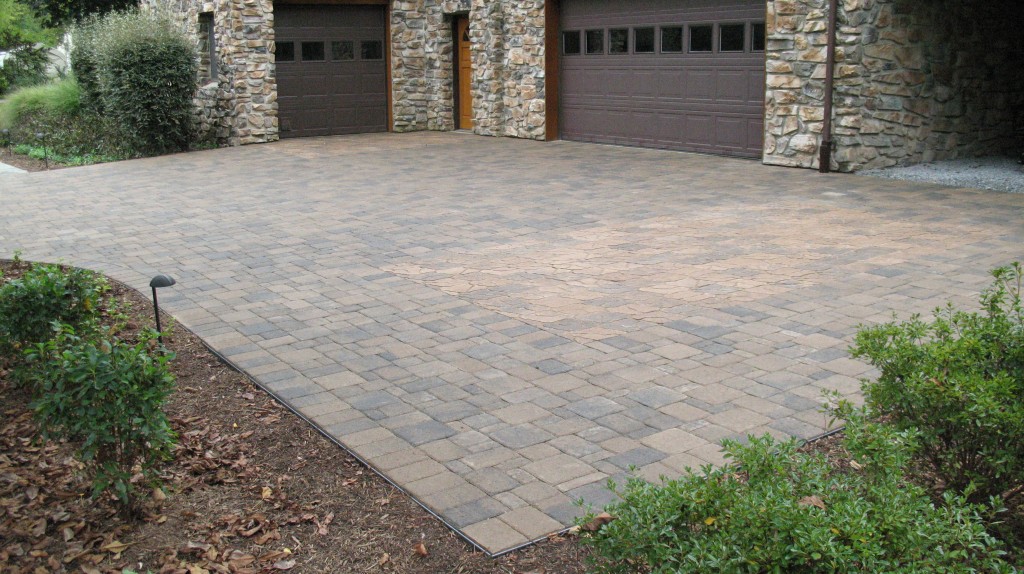
I struggled with whether to include pattern or not in this series, because pattern is seen more commonly with interiors – think wallpaper and fabrics. In the near future I’ll do a post about outdoor fabrics, because the options are now amazing, but I didn’t want to do that here. After all, we rarely mix patterns and fabrics outside the same way we do inside. Does my umbrella coordinate with my cushions? Awesome. Hit me with more sangria.
Then I got to thinking about hardscape design, something that deals a lot with pattern. With natural stone patios we tend to have either irregular flagstone or random-pattern rectangular flagstone. Used together, they can play off one another quite nicely:
When we start talking about pavers, there are lots of different options. A commonly used pattern is the I-pattern:

An important consideration when selecting a material and a pattern is making sure that the pattern is appropriate to the scale and the repeat in the pattern is pleasing. In this driveway we broke up the pattern with inlay sections, but even the repeat on the large field isn’t overwhelming.
Pattern repeat is why I don’t like the pavers that try to look like irregular, natural flagstone. They don’t work, because in order to be a modular product the number of sizes and shapes is pretty limited. They’ve gotten better than they were even a few years ago, but they’re still unconvincing.
This pattern is better than some in that it’s more random, but even at that the size of the pieces is wrong – you wouldn’t lay a real flagstone patio with pieces that small.
Where pattern gets even trickier is when you’re selecting both wall and pavement materials. If you have a big brick house, a brick patio will give you a feeling of “whoa, the brick!” A rectangular patterned flagstone patio with a brick border can tie it all together quite nicely.
On the other hand, if someone is using pavers with a brick house, I usually caution them to go for a paver that’s quite different from the house brick. If you select a reddish brick-style concrete paver for a red clay brick home, they’ll never match and it will look like you tried and failed. Better to select a very different paver (i.e., 6×6 and 6×9 pavers) in a completely different color family. It’s like fashion, too matchy-matchy is bad, and so is clashing.
Next up: light!




The first patio really draws me, so beautiful and stylish. Looks terrifically complicated to do though (mind you I’m talking as a sad untrained DIYer). I’ve always wanted to try one of those DIY fake paving stone paths but seeing it here is discouraging me. I agree it looks wrong. My first thought on this blog though, was that I wonder how the paisley jacket would look with those plaid pants above.
I made the mistake of envisioning that jacket/pants combo, and my eyeballs are now actually throbbing. Ugh.
The fake stone paths are better than they were (Techo-Bloc did one called Natura that they yanked from the catalog after a year and never spoke of again), but come on. For that price, use real stone. Thanks for the compliment on the patio! I like to find masons who profess to enjoy intricate, challenging projects – and then make them regret their words.
Is the third picture of a random flagstone patio a Belgard product????
Thanks
Conrad – I’d have to double check, but I believe so.